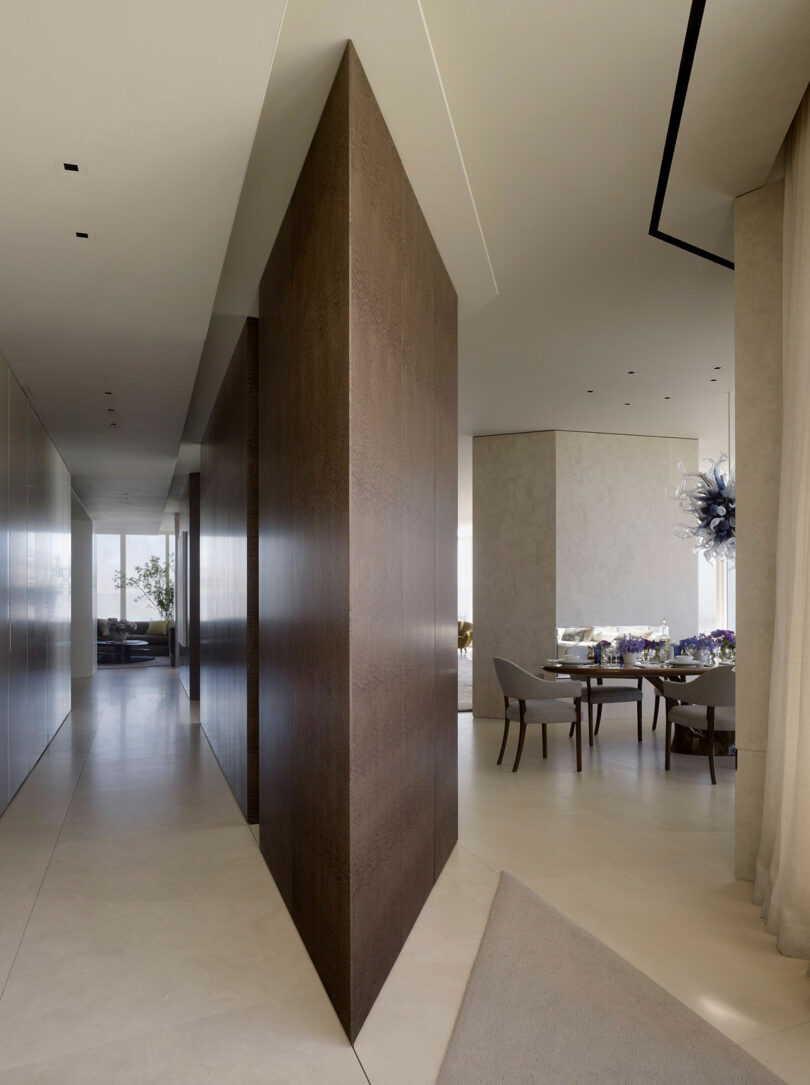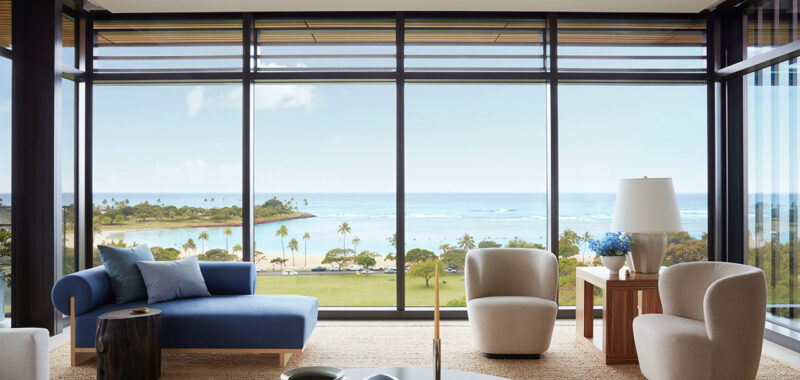When David Oldroyd was a pre-med student, he envisioned the dream house he would own someday. Ever curious, he enrolled in an introductory design class and soon ended up on a path that transformed his life. “I found myself studying for fun through the night and knew something was up,” Oldroyd says. “I gambled on a semester off from medicine and only took design courses. I have never looked back.”

David Oldroyd
Orlando Diaz-Azcuy, founder of ODADA, hired Oldroyd in 1990, and for more than two decades they collaborated on a variety of projects from corporate offices to showrooms and residences. Based in San Francisco, Oldroyd is now principal and owner of the firm, which is known for a clean, sophisticated aesthetic.
Oldroyd’s own inspirations take many forms, yet his love of classical music, nurtured by his parents, is a mainstay. His mother encouraged him to practice, while his father taught him to hear the “sound” of snowfall. Visuals are just as resonant for the designer and his clients, so he will often sketch something that catches his eye on the back of a business card, or take a snapshot with his mobile phone. Certain pieces – from the pre-Instagram days – still remain vivid in his mind. “As a child I was mesmerized by the swirling patterns of hand-braided cotton area rugs, woven from the last use of hand-me-down fabrics.”
Today, David Oldroyd joins us for Friday Five!

Photo: Shaun Sullivan
1. My Piano
The best day for me starts early by playing classical music on the piano. I have the perfect arrangement in my living room, sitting at my black satin piano against an undulating white plaster wall sculpture. I look toward the green rolling hills of Twin Peaks, made golden by the sunrise. Occasionally the fog tumbles down the ridge and descends to the Bay. It’s an inspiring setting to dive into the music of Philip Glass, Frédéric Chopin, Ryuichi Sakamoto, or Erik Satie.

Photo: Shaun Sullivan
2. P_Wall Sculpture
In my living room I have the “P_Wall” sculpture (2006) by Andrew Kudless of Matsys, acquired in 2008. Conceived as a study of the “ways in which architecture can be understood as a material system where form, growth and behavior are interrelated,” its rippling forms evoke fractals in nature, from the macro cosmic machinations of the universe to the micro texture of human skin. It represents to me the way music moves, weaving and winding its way into your soul.

Growing up in Southern Utah, I’ve always been awed by the majesty of the desert there. Its perceived emptiness is instead filled with the transcendent colors, textures, and shapes of uninterrupted nature, timeless and eternal. That landscape is artfully juxtaposed by the exquisitely crafted and contextually sensitive architecture at Amangiri. It captures the spirit of a place as well as anything I’ve ever experienced – a place to feel lost and be found at the same time!

4. A Nephew’s Gift
For Christmas one year I was given a small wooden horse made by my nephew, who was a small child at the time. Crafted in his grandfather’s basement from scraps and screws, it represented something dear to him being shared with me. A constant reminder of intrinsic humble beauty, it stands gazing out in front of the minimalist Gerhard Richter oil painting “Vermalung (Braun)” from 1972.

Photo: Shaun Sullivan
Over the years I’ve put together a large collection of one of my favorite glasses, High Society, designed by Ludovico Diaz de Santillana in 1962. The surface is finished in the sumptuous battuto technique, and is one of the most difficult and costliest series ever produced by Venini. Although simple in shape, it is lovely to look at, possesses terrific weight, and feels amazing in the hand.
Works by David Oldroyd:

This image embodies my design philosophy. Sculpted minimalism with a touch of lyrical maximalism and imbued with the soul of the hand-crafted. \\\ Photo: Matthew Millman

This interior was sculpted within an empty shell of concrete and glass, It illustrates my desire for a few glorious things wrapped in sumptuous materials and luxurious finishes, all grounded in effortless function. \\\ Photo: Matthew Millman

In an aged oak forest, we created an oasis of open glass-enclosed rooms grounded with stone floors, capped with wood ceilings, sheathed in flowing linen sheers, and filled with a mix of flexible furniture and objects that play off the surrounding natural landscape. \\\ Photo: Matthew Millman

A current favorite project, The Launiu Ward Village, is a culmination of the journey of learning about the Hawaiian Islands. The tower’s façade is undulating as if sculpted by the Kona winds. Responding in that context, we carefully sculpted the building’s entrance experience, framing it with natural lava and coral stones, woven textiles, and warm woods. \\\ Photo: Courtesy of Ward Village

